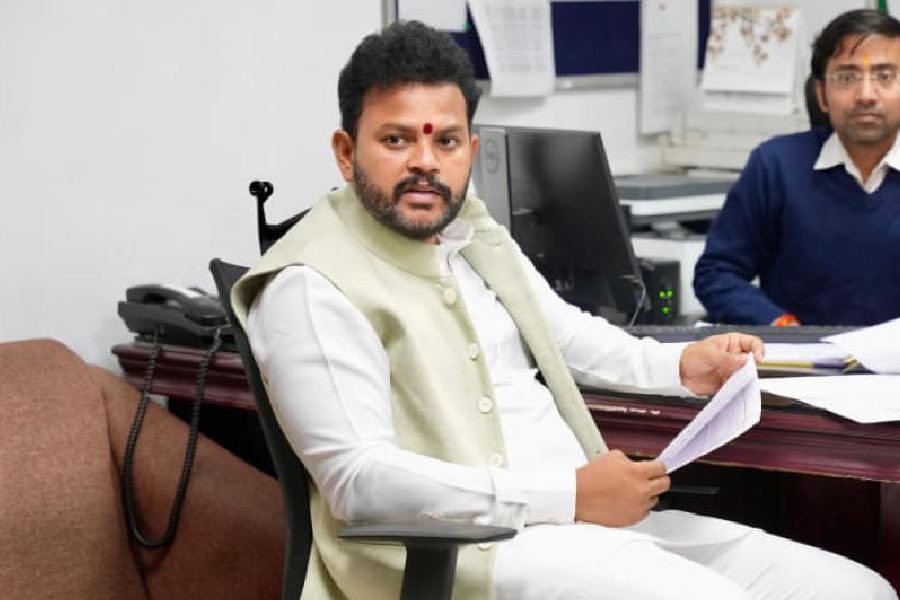For political parties in West Bengal, a rally at the Brigade Parade Ground on the Calcutta Maidan has a special significance. For the Left, the significance has assumed the status of a special pilgrimage — a reason why the ailing Buddhadeb Bhattacharya despaired over his inability to attend the February 28 rally. With nostalgia in plentiful supply in recent years, veteran communists have created legends around the Brigade meetings. They look back wistfully at the time the rising communist party accorded an ecstatic welcome to Nikita Khrushchev — the then leader of the socialist ‘fatherland’— during his visit to Calcutta in November 1955. And they set their attendance standards by the estimated 11 or 12 lakh people who attended the Brigade rally in February 2011, a spectacular show of strength that couldn’t reverse the Left Front’s crashing defeat in the assembly elections three months later.
It is always difficult to anticipate how posterity will view the CPI(M)-organized rally last Sunday to proclaim that the three-party alliance is the alternative on offer to the voters of West Bengal. In terms of attendance, the undeniably large gathering didn’t quite set a new record, as was hoped for by the Left Front chairman, Biman Bose. However, the head counting exercise apart, the rally was politically important for the Communist Party of India (Marxist). Since it crashed to its first defeat in an assembly election in 2011, the party has been witnessing a steady decline in its electoral popularity. It plumbed the depths in the 2019 general election when, for the first time since parliamentary democracy was established in India, the two communist parties failed to win even a single seat to the Lok Sabha from West Bengal. Indeed, it managed to save its security in only one parliamentary constituency. In 2019, the CPI(M) was edged out of its place as the principal opposition to Mamata Banerjee’s Trinamul Congress by the Bharatiya Janata Party, a party that had hitherto been on the fringes of Bengal politics. There is no indication that this marginalization has been checked since then. Under the circumstances, last Sunday’s mega rally, when the CPI(M) pulled out all its organizational stops, was important to portray that the Left was back in business — this time with the aid of non-Left allies such as the Congress and the newly-formed Indian Secular Front.
In determining its political approach, the communist parties have a tendency to fall back on history. Taking the assistance of non-communists for a larger fight has been part of the collective experience of the communist movement since the 1930s when it was confronted with the challenge of fascism in Europe.
There were three approaches that defined the resistance to Hitler and the other variants of the Right. The first and, by far, the most disastrous approach was to go it alone, denounce social democrats as ‘social fascists’ and insist on the party’s monopoly of correctness. This Red Front approach was a factor in the dissipation of anti-Nazi energies in the immediate run-up to Hitler assuming power in 1933. The second approach, better known as the United Front strategy, lay in allying with non-communist parties and forces but with the communists at the helm. The CPI(M) has, for long, pursued this approach in West Bengal and Kerala, its two strongholds. It was the principle of the United Front that explains why the CPI(M) politburo rejected the suggestion that Jyoti Basu should assume charge as prime minister in the fractured Parliament of 1996. Since the CPI(M) would not be the dominant partner of any coalition, it chose the safe option of supporting the United Front government from the outside. Finally, there is the Popular Front approach, crafted in France of the 1930s, that lay in participating in mass movements and even governments as a non-dominant partner — an approach orthodox Leninists find abhorrent.
In the West Bengal elections of 2016, the CPI(M) forged a mahajot with the Congress as an extension of the United Front strategy. Although it maintained its misgivings over the Congress’s larger political orientation, it felt that a ‘bourgeois’ partner was necessary to give the party an opportunity to recover lost ground and give breathing space to its beleaguered cadres who were in retreat since the AITC took over the state government in 2011. Of course, in the election, the Congress won a larger number of seats than the CPI(M) despite the latter contesting more. Apart from its failure to prevent a second term for the AITC, the CPI(M) drifted further to the margins and this was fully evident in the 2019 general election outcome.
In this coming assembly election, unlike 2016, the CPI(M)-Congress alliance was fighting for a respectable third place. Some of its supporters entertain the hope that its intervention would lead to a fractured verdict and give space to the party to influence the formation of an anti-BJP coalition that included the AITC and the Congress. This plodding approach was upset by the unexpected emergence of Abbas Siddiqui of the Furfura Sharif seminary as a rallying point for Muslim youth, particularly in North and South 24 Parganas.
Initially the thrust of this formation was to ally with the All India Majlis-e-Ittehadul Muslimeen of Asaduddin Owaisi and craft an independent Muslim bloc detached from both the AITC and BJP. However, a section of the CPI(M) made Siddiqui a more tempting alternative. A significant chunk of the Muslim vote plus the transferable vote of the CPI(M) would make the third formation more winnable in a large number of seats and catapult the ISF to a position where it could claim to be the foremost representative of Muslims in the state. Siddiqui, in short, would become the Bengal counterpart of Badruddin Ajmal in Assam.
The CPI(M) believed it could use the ISF to make a strong comeback without jeopardizing its United Front strategy. However, at Sunday’s Brigade rally, Siddiqui showed he had other ideas. First, it is clear that he supplied nearly one-third of the crowds, a feat that demonstrated his mobilizing capacities and placed him a notch above the Congress. Secondly, with his aggressive rhetoric and demand for a stake in the power structure, he took Muslim politics a significant step forward. He made it clear that he was intent on making the Muslim community more than just a vote bank. Finally, he made it clear that he was not the third partner of an unequal alliance but the person who called the shots. To use the terminology of the communists, he transformed the United Front into a Popular Front. The CPI(M) was no longer in the driver’s seat but a passenger along with the Congress. This impression will be reinforced if Siddiqui persists with his angry rhetoric.
It is always hazardous to predict the impact of these developments on voting patterns in the coming weeks. Any accretion of Muslim votes to the third front will, naturally, affect the AITC the most and, by implication, benefit its principal challenger — the BJP. However, there are two other possibilities. In 2019, the BJP benefited disproportionately from the shift of Left and Congress votes to its kitty. Will a chunk of these voters have a homecoming if it appears that a vote for the third front candidates will not be wasted on account of its starting with an assured Muslim support? Alternatively, will the aggression of the ISF see Hindu voters of the CPI(M) and Congress run to the BJP out of a sense of trepidation?
As of now, the answers are unclear. What is, however, certain is that the angry leader from Furfura Sharif has thrown a spanner in the works. He has either made the electoral outcome more uncertain or made it woefully one-sided.










